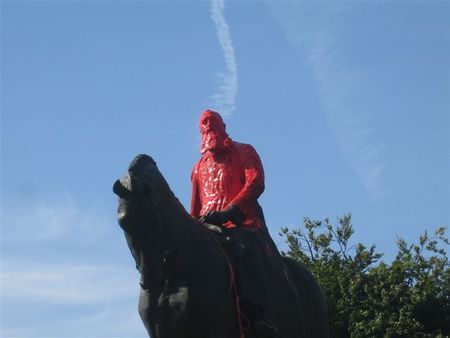Leopold II – Dealing with a dark legacy
You might have seen this bearded fellow’s statue near the royal palace: a rather impressive monument only mentioning his position as King of Belgium and the duration of its reign. One might be forgiven for thinking of former kings such as Leopold II as noble figures: our books and statues project a pristine image of former rulers.
Upon googling his name, the second result is a Wikipedia article entitled “Atrocities in the Congo”. Right. Leopold II is notorious indeed because he oversaw what might very well be the largest massacre of his time. With the help of explorer Henry Morton Stanley, he lay claim on what is now the Democratic Republic of Congo, which was “awarded” to him in the Berlin conference of 1885. This was a private claim, meaning this was his personal possession. Leopold II justified his claim by saying he would improve the lives of the Congo’s native inhabitants. This can be seen as the apex of colonial hubris: a single man was given the legal ownership of a territory 75 times larger than its own country, only on account of his birth, the supposed “savagery” of its inhabitants and the belief in the “civilising” nature of colonisation.
What followed were decades of the most brutal extractivist policy to enrich the Belgian royal family and their chums through the sale of ivory and rubber. The treatment of the Congolese is reminiscent of the colonisation of the Americas, with hands cut for stealing or not reaching rubber production quotas.
Sources differ on the how many people died, from 1 to 10 million in only 2 decades. Most perished from disease but it would be impossible to dissociate this from the havoc caused by Leopold II’s brutalisation of the Congolese. In the meantime Leopold II and his inner circle made huge fortunes and funded much of Brussels’ monuments with it.

Belgium has been dealing with this issue for some time now, with civil society groups demanding that the statue is taken down, or at least some information added to it on Leopold’s role in the massacre of the Congolese. Protesters have painted graffiti or thrown paint at the status. Some will say that Leopold never went to Congo, which while true, is a poor consolation for the people that suffered from his policies.
It is beyond doubt that the statue should remain as it is. But it will be very hard to realise this, as doing so would be not only question the Belgian royal today, but also the legitimacy of the colonisation process, which is sometimes still viewed as having had a beneficial influence despite its brutality. Coming to terms with one’s history is rarely easy, but an essential step to not repeating the errors of the past. It is time for Europe to revisit its history and loudly condemn those that have been opposed to the values it has come to represent.



